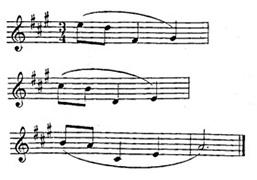2024 marks a significant milestone in the intellectual property landscape as we commemorate the 30th anniversary of the European Union Trade Mark (EUTM), initially known as the Community Trade Mark (CTM). Entered into force on 15 March 1994, the EUTM regulation revolutionised the way businesses protect their brands across the (now) 27 Member States. As the European Union Intellectual Property Office (EUIPO) anticipates reaching 3 million trade mark applications by the year's end, it reflects on the journey of trade marks from historical symbols to modern brand protectors.
From Medieval Seals to Modern Symbols
The history of trade marks traces back to ancient times, with their evolution significantly accelerating during the Middle Ages. This period saw the emergence of trade marks as a means for craftsmen to guarantee the quality of their goods. The Industrial Revolution further propelled their importance, leading to the establishment of international agreements such as the Paris Convention in 1883 and the Madrid Agreement in 1891. These developments laid the groundwork for the comprehensive international intellectual property environment we navigate today, culminating in the creation in 1994 of the Office for Harmonization in the Internal Market (OHIM) and since 2016 the EUIPO. Today, being able to register a trade mark that’s valid across the entire EU is a true success of European integration and a clear win for EU businesses.
The Evolving Nature of Trade Marks*
Today, trade marks encompass far more than just words or logos. The 2017 regulation expansion allows for the protection of colours, shapes, sounds, motions, multimedia, patterns and hologram marks, reflecting the dynamic nature of brand identity in the digital age. Innovations in trade mark registrations have enabled companies to protect unique brand elements.
Colour schemes, such as the one filed by Instagram, can be registered as colour marks. Sound marks, such as Nokia’s ringtone, Ricola’s advertising tone, and Tetris’s game music, are auditory symbols associated with their brands. Pattern marks are used by companies like Volotea or Lancel to facilitate the immediate recognition of their products. Lastly, motion trade marks, such as the specific movements in Chopard’s luxury watches or Dropbox’s logo animations, serve as innovative ways to safeguard brand signatures. These developments highlight the adaptability of trade mark law to accommodate the ever-changing landscape of brand communication and identity.
Looking Forward
As we look to the future, it's clear that trade marks will continue to play a pivotal role in protecting intellectual property and supporting businesses in their growth and innovation efforts. While certain sensory marks like smells and tastes remain beyond the scope of current trade mark protection, the ongoing evolution of trade mark law promises new avenues for brand identity safeguarding.
* The trade marks presented in this article were chosen randomly for illustration purposes.



